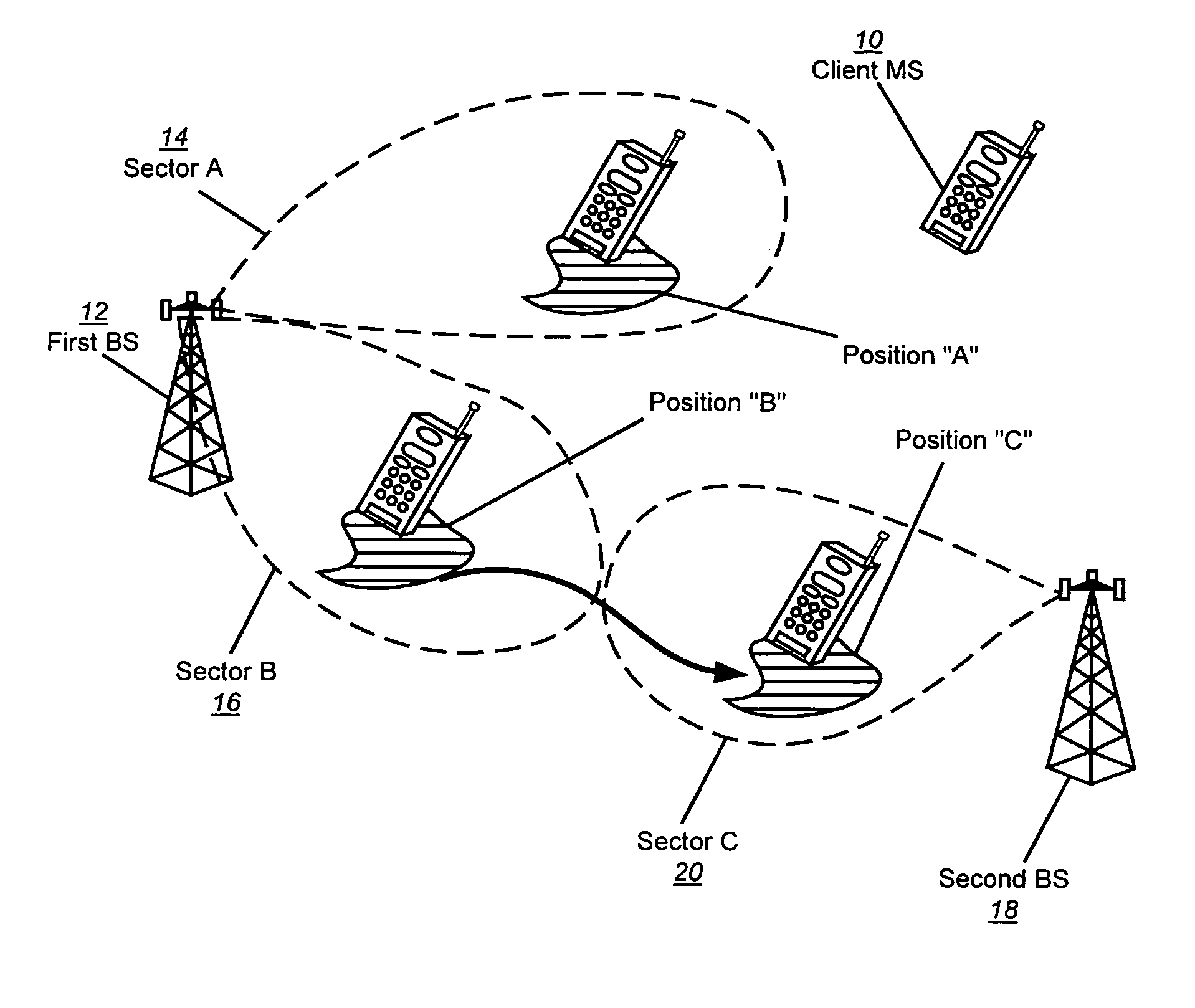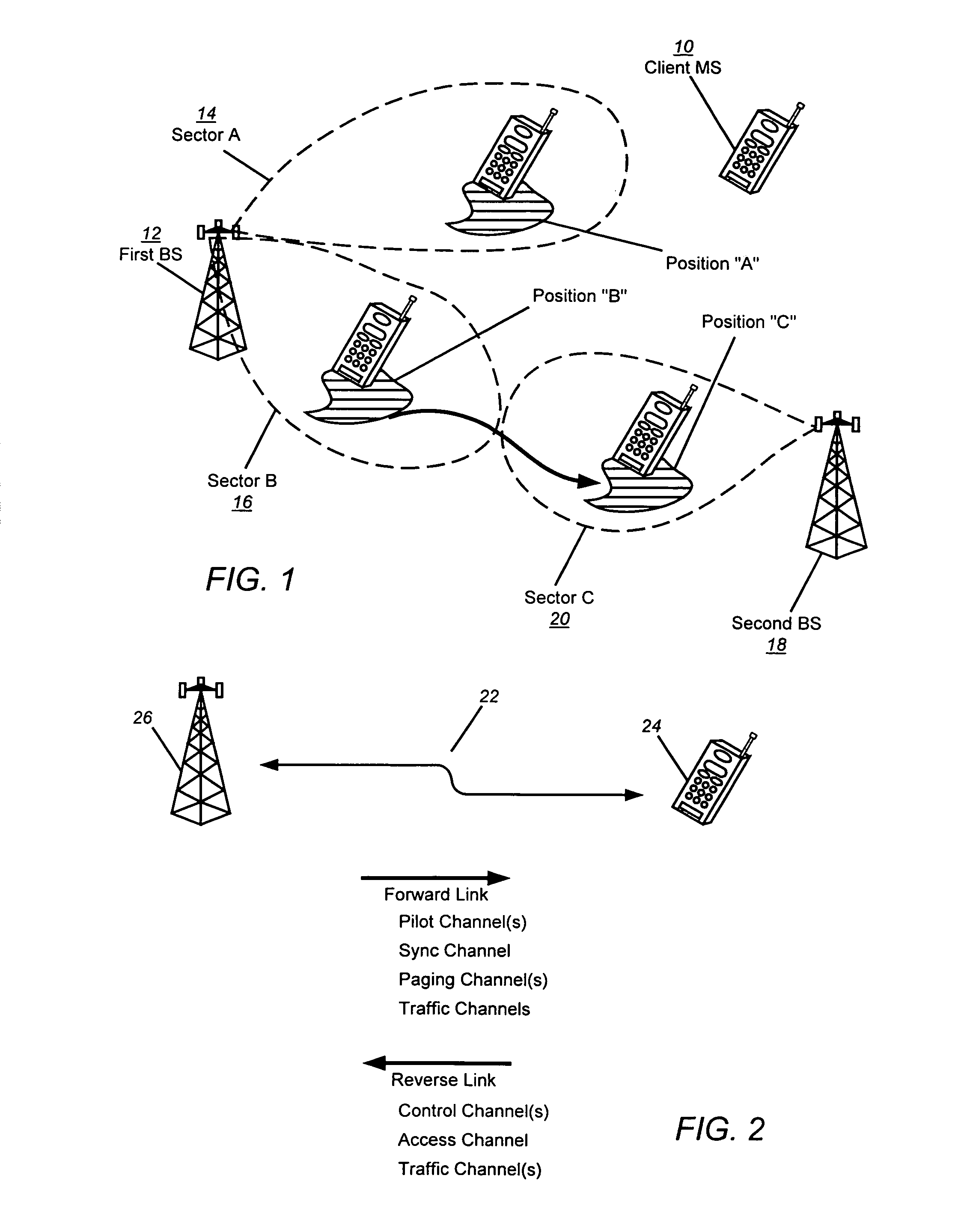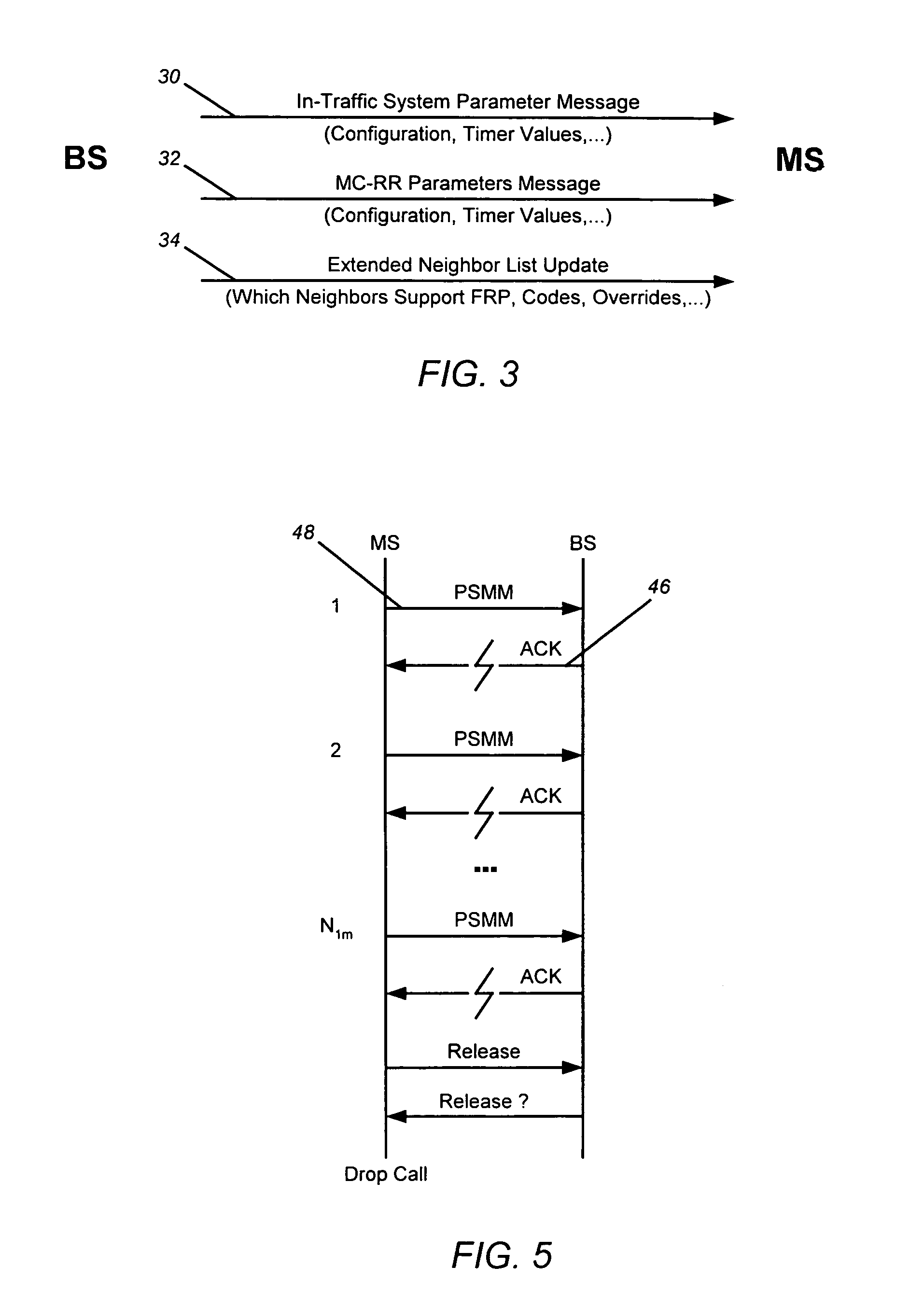Method and apparatus for dynamically determining a mobile station's active set during a connection rescue procedure
- Summary
- Abstract
- Description
- Claims
- Application Information
AI Technical Summary
Benefits of technology
Problems solved by technology
Method used
Image
Examples
Embodiment Construction
[0059]In the following description of preferred embodiments, reference is made to the accompanying drawings which form a part hereof, and in which is shown by way of illustration specific embodiments in which the invention may be practiced. It is to be understood that other embodiments may be utilized and structural changes may be made without departing from the scope of the preferred embodiments of the present invention.
[0060]It should be further understood that although the description provided herein may reference the CDMA communication protocol (code-based protocols) for purposes of explanation only, embodiments of the present invention are applicable to other communication protocols and digital radio technologies generally, and include, but are not limited to, CDMA, TDMA, FDMA, GSM, GPRS, and the like.
[0061]Embodiments of the present invention allow the MS to set and adjust rescue thresholds T_ADD_R and T_DROP_R (established by pilot Ec / Io values) and select and add BSs (sector...
PUM
 Login to View More
Login to View More Abstract
Description
Claims
Application Information
 Login to View More
Login to View More - R&D Engineer
- R&D Manager
- IP Professional
- Industry Leading Data Capabilities
- Powerful AI technology
- Patent DNA Extraction
Browse by: Latest US Patents, China's latest patents, Technical Efficacy Thesaurus, Application Domain, Technology Topic, Popular Technical Reports.
© 2024 PatSnap. All rights reserved.Legal|Privacy policy|Modern Slavery Act Transparency Statement|Sitemap|About US| Contact US: help@patsnap.com










